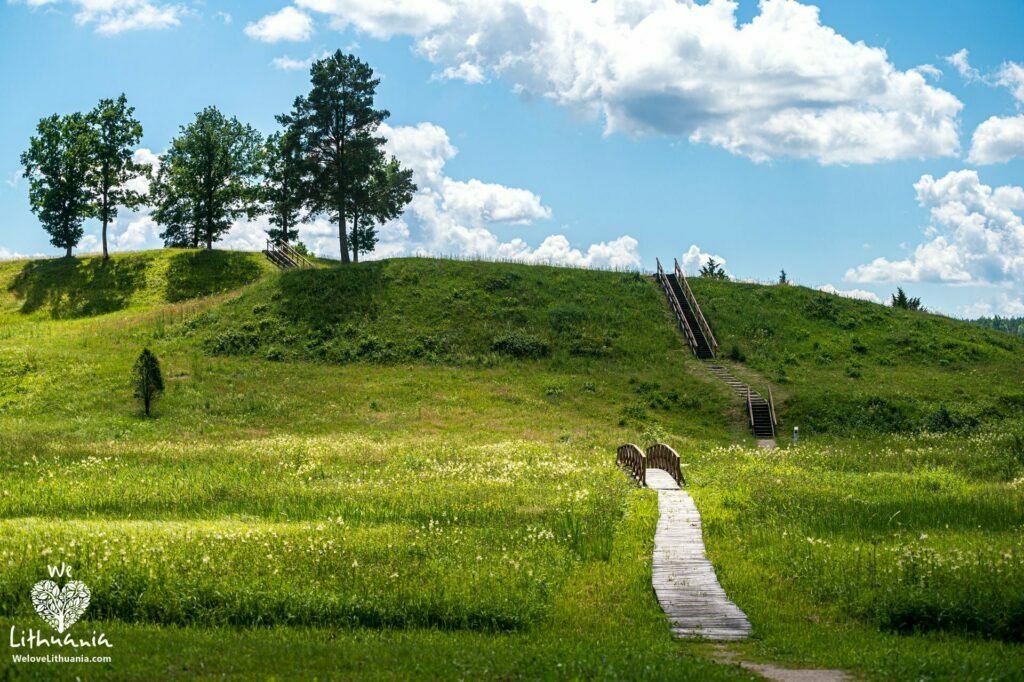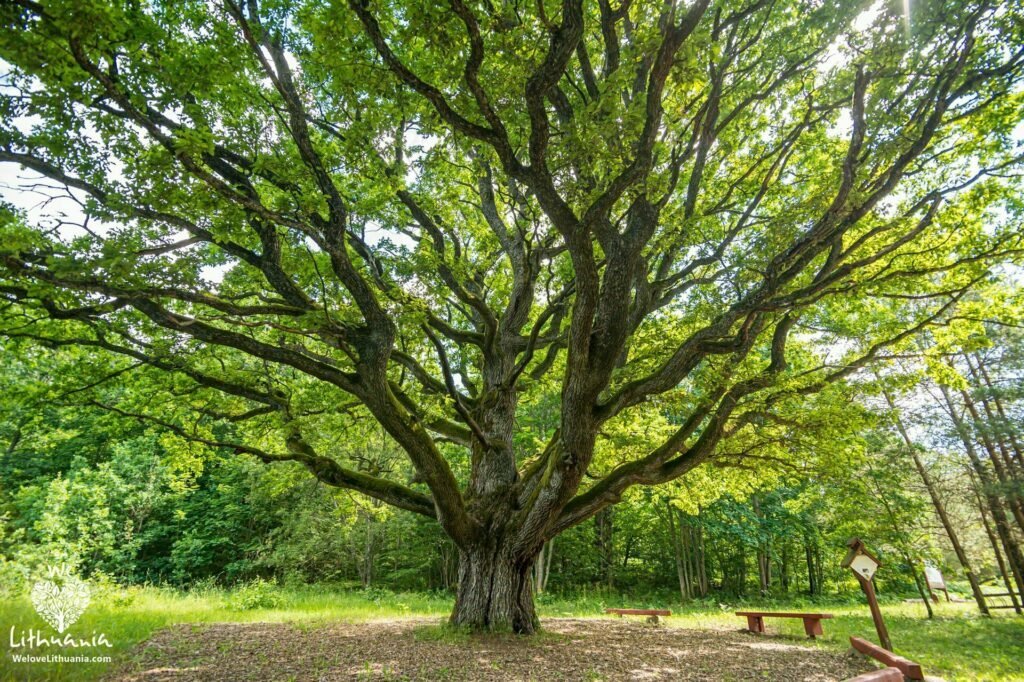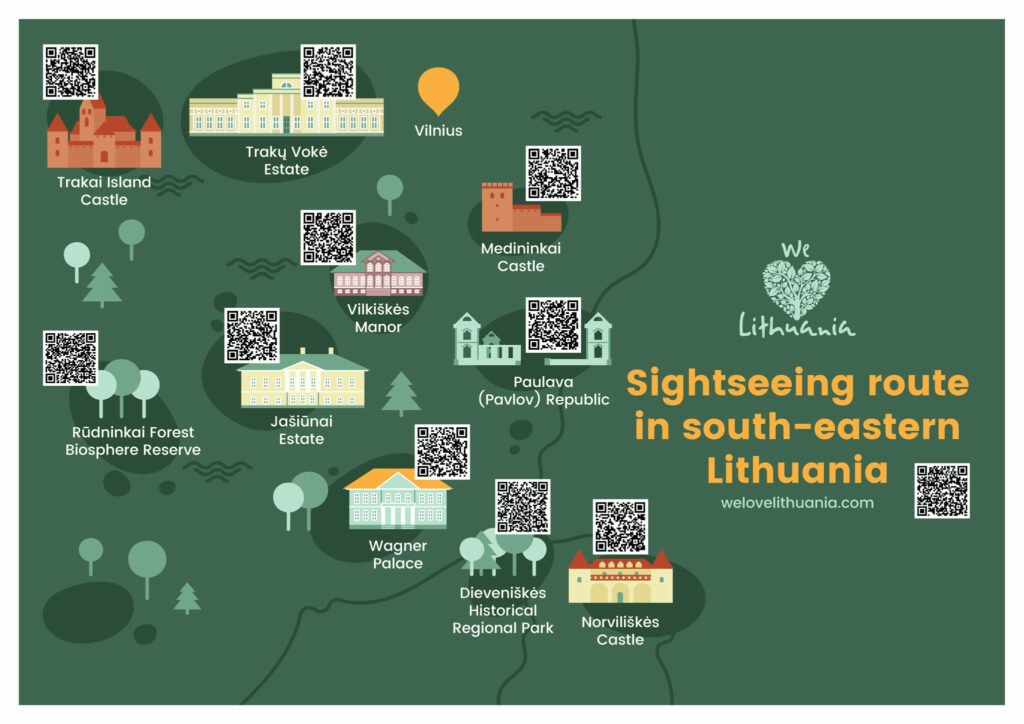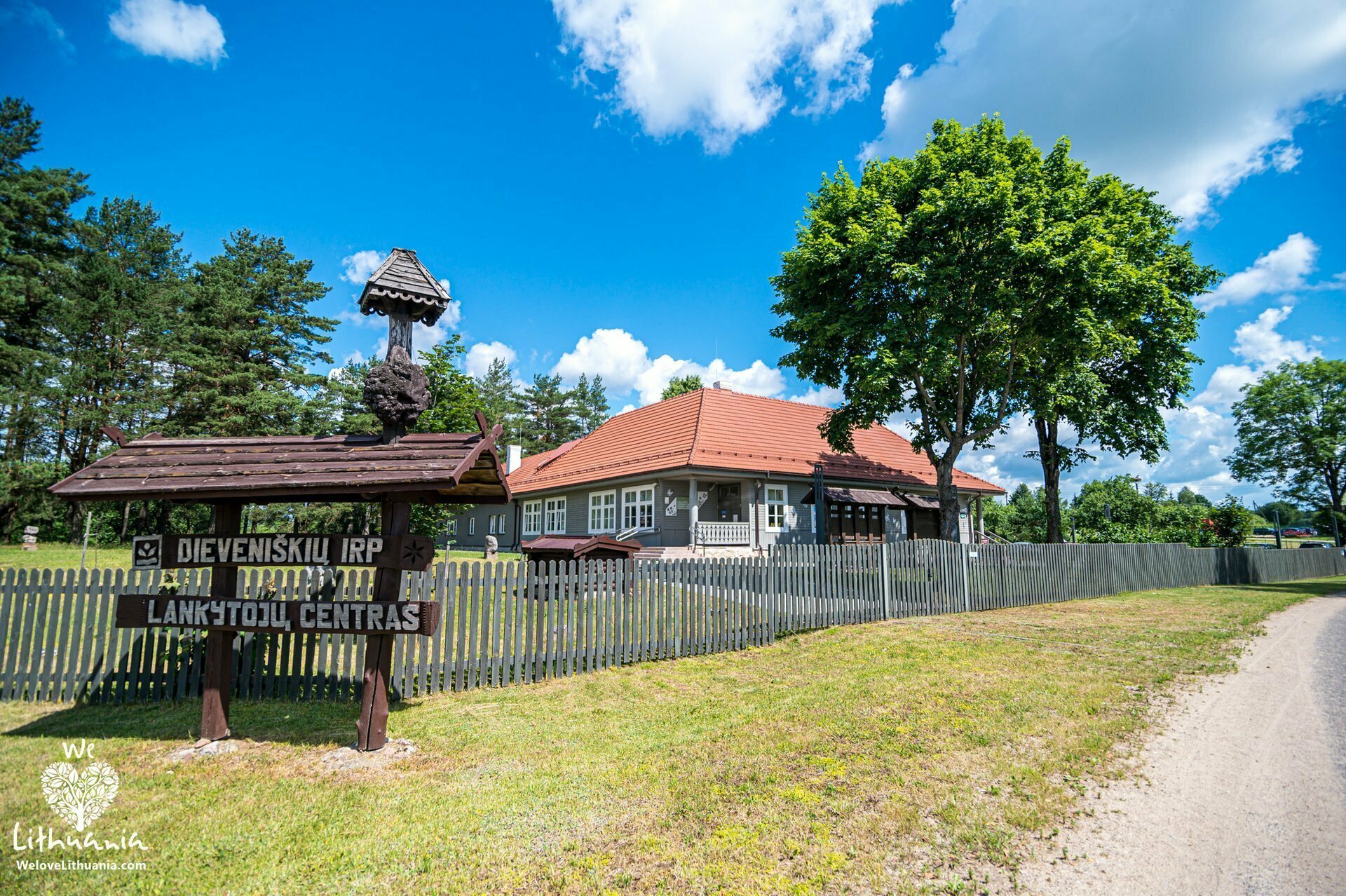Dieveniškės Historical Regional Park is located in the Dieveniškės Loop – that strange protuberance on the map of Lithuania that juts out into Belarus. This park in south-eastern Lithuania is rich in natural, historical and cultural heritage sites. It may even take more than one day to visit them all.
 When you arrive here, you will first find an excellent and very helpful visitor centre, where you can get directions and information about the park’s natural and cultural heritage attractions and recreational areas before you start your tour. You can also plan your trip at the visitor centre and visit the Ethno-cultural Heritage exhibition, which has been rated by visitors as one of the best in the protected areas.
When you arrive here, you will first find an excellent and very helpful visitor centre, where you can get directions and information about the park’s natural and cultural heritage attractions and recreational areas before you start your tour. You can also plan your trip at the visitor centre and visit the Ethno-cultural Heritage exhibition, which has been rated by visitors as one of the best in the protected areas.
On your journey through the Dieveniškės Historical Regional Park, you will have the opportunity to learn about the history of our region by visiting the ethnographic linear settlements of the 16th–17th centuries that have preserved their structure (Lastaučikai, Poškonys, Grybiškės, Rimašiai, etc.). One can also view the Lithuanian tribal burial mounds (Poškonys and Stakai), which testify to an even older history, where archaeological research has found graves of Lithuanian tribes from the 5th–7th and 9th –12th centuries, as well as gravestones, ornaments, jewellery, tools, pot shards, and other objects that bear witness to the burial practices of our forefathers.
 History buffs will be able to climb the Bėčionys Mound, which was built in the early 1st millennium on a separate hill on the right bank of the River Gauja, and admire the magnificent panoramic view of the surrounding area from the mound. Also, one can visit Norviliškės Castle, a restored 16th-century Renaissance fortification complex located a few dozen metres from the European Union’s external border with Belarus.
History buffs will be able to climb the Bėčionys Mound, which was built in the early 1st millennium on a separate hill on the right bank of the River Gauja, and admire the magnificent panoramic view of the surrounding area from the mound. Also, one can visit Norviliškės Castle, a restored 16th-century Renaissance fortification complex located a few dozen metres from the European Union’s external border with Belarus.
Those interested in nature and mythology will be interested to see the thousand-year-old oak trees at Grybiškės and Stakai villages, the century-old six-trunked Grybiškės pine, the unique Rimašiai stone quarry, and the other huge boulders with names that are an integral part of the mythology of this region of south-eastern Lithuania in the Dieveniškės Historic Regional Park.
 Nature lovers will enjoy a walk along the circular, 1.8 km long Gauja Educational Nature Trail, which winds along the banks of the River Gauja. The trail has 18 information boards detailing the plants, animals and other features of the natural area.
Nature lovers will enjoy a walk along the circular, 1.8 km long Gauja Educational Nature Trail, which winds along the banks of the River Gauja. The trail has 18 information boards detailing the plants, animals and other features of the natural area.
Practical advice for travellers: make sure you have your ID with you when you go to the Dieveniškės Loop, as it is a border area, and you have to pass through a border control point to enter the Loop.
This article is a part of a project implemented within the framework of the Innovation of Tourism Services and Products Program, with funding from the Agency for Science, Innovation and Technology, and from funds allocated by the Ministry of Economy and Innovation of the Republic of Lithuania.


